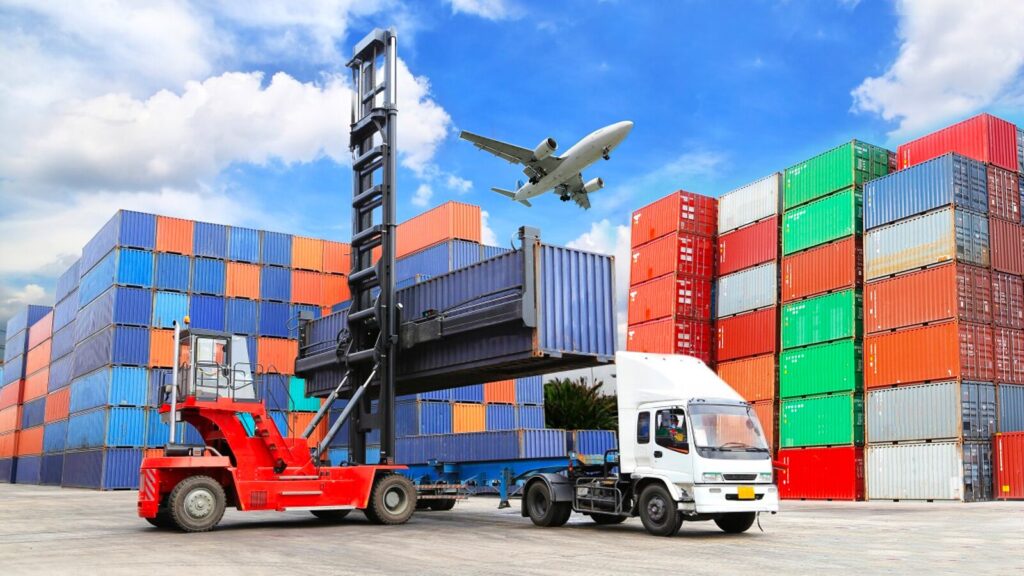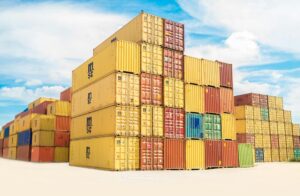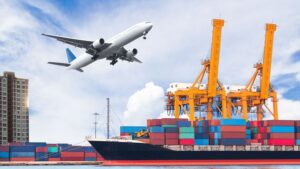Shipping from China to the USA by sea remains a cornerstone of global trade. Renowned for its cost-effectiveness and capacity for large volumes, this mode of transport continues to be the preferred choice for countless businesses. Yet, navigating the intricacies of international ocean freight can seem daunting for newcomers. Fear not, intrepid importer! This guide equips you with the knowledge and tools to embark on a smooth and successful maritime shipping journey.
shipping from china to usa by sea
Advantages of Shipping by Sea

While air freight offers undeniable speed, sea freight reigns supreme in several aspects:
- Cost-Effectiveness: Sea freight boasts significantly lower shipping costs per unit compared to airfreight, making it ideal for bulky or non-perishable goods.
- Bulk Capacity: Ocean vessels possess immense cargo capacities, perfectly suited for high-volume shipments, allowing you to consolidate large quantities of goods into a single container, reducing overall costs.
- Environmental Impact: Compared to air travel, sea freight boasts a considerably lower carbon footprint, appealing to environmentally conscious businesses.
The Process of Shipping from China to the USA
Here’s a simplified breakdown of the ocean freight process from China to the USA:
- Quotation and Booking: Contact a reputable freight forwarder to obtain quotes based on your cargo details, origin, destination, and desired service level. Once you finalize the arrangement, your forwarder will book space on a vessel.
- Preparing Your Shipment: Ensure your goods are properly packaged for ocean transport, considering factors like weight distribution and potential exposure to moisture. Palletization is often recommended for optimal containerization.
- Customs Clearance: Both China and the USA require specific documentation for customs clearance. Work with your forwarder to ensure all necessary paperwork is completed accurately and filed promptly to avoid delays.
- Delivery and Collection: Once your shipment clears customs, it’s transported inland to your designated delivery point within the USA.
Choosing the Right Shipping Method and Container Size

Full Container Load (FCL): Ideal for large shipments that fill an entire 20-foot or 40-foot container. This offers the most cost-effective rate per unit of cargo.
Less Than Container Load (LCL): If your shipment doesn’t fill a full container, your goods are consolidated with others in a shared container. This is a cost-effective option for smaller shipments, but transit times may be slightly longer due to additional handling at ports.
Choosing the Right Container:
- 20-foot Dry Container (GP): The most commonly used container, ideal for general cargo.
- 40-foot Dry Container (HC): Provides additional height for bulky items.
- 40-foot High Cube Container (HC): Offers the most cubic footage for maximizing cargo volume.
- Refrigerated Container (REEFER): Essential for temperature-controlled transportation of perishable goods.
Consult your freight forwarder to determine the optimal container size and type based on your specific cargo requirements.
Understanding Incoterms and Their Impact on Shipping
Incoterms (International Commercial Terms) are a standardized set of rules that define responsibilities and risks between buyers and sellers in international trade transactions. Understanding the relevant Incoterm for your agreement is crucial, as it dictates which party is responsible for costs associated with:
- Packing: Who pays for packaging materials and labor?
- Loading and Unloading: Which party is responsible for loading the container at the origin and unloading it at the destination?
- Carriage: Who covers the costs of ocean freight transportation?
- Customs Clearance: Which party is responsible for managing customs formalities and any associated fees?
- Insurance: Who is responsible for insuring the cargo during transport?
By clearly outlining these responsibilities within your sales contract, you can avoid confusion and ensure a smooth transaction.
Customs Clearance and Documentation Required for Shipping

Customs clearance is the process of obtaining official approval for your goods to enter the USA. To expedite this process, ensure you have the following documents in order:
- Commercial Invoice: A detailed list of your goods, including descriptions, quantities, and unit prices.
- Bill of Lading (BOL): A document issued by the carrier serving as a receipt for your cargo and a contract of carriage.
- Packing List: An itemized list of all goods in your shipment, including their weight and dimensions.
- Export Declaration: A form required by Chinese authorities detailing your shipment.
- Importer Security Filing (ISF): A mandatory electronic filing submitted to U.S. Customs and Border Protection (CBP) before your goods arrive.
Working with a reliable freight forwarder experienced in handling customs clearance can significantly ease this process.
shipping from china to usa by sea
Calculating Shipping Costs and Managing Freight Charges
Understanding the various components that contribute to your overall shipping costs is crucial for budgeting and pricing your goods competitively. Here’s a breakdown of the key factors to consider:
- Ocean Freight: This is the base cost of transporting your container by sea from the origin port in China to the destination port in the USA. Rates are typically quoted per container (FCL) or per cubic meter (LCL).
- Terminal Handling Charges (THC): These fees cover the costs of loading and unloading your container at the origin and destination ports.
- Inland Transportation: This refers to the cost of transporting your container from the port of arrival to your final destination within the USA via truck or rail.
- Customs Clearance Fees: These may include customs broker fees, government charges, and any applicable duties or taxes levied on your goods.
- Additional Charges: Depending on your specific needs, there may be additional charges for services like documentation processing, fumigation, or special handling for oversized or overweight cargo.
Incoterms play a significant role in determining who is responsible for each of these charges. Clearly define these within your sales contract to avoid any surprises.
Negotiating Ocean Freight Rates: When working with a freight forwarder, negotiate ocean freight rates based on factors like your shipment volume, frequency, and destination port. Building a strong relationship with your forwarder can lead to more favorable rates in the long run.
Cost-Saving Strategies: Here are some strategies to potentially reduce your overall shipping costs:
- Consolidate Shipments: If you have multiple smaller shipments going to the same location, consider consolidating them into an FCL container for a more cost-effective rate.
- Optimize Packaging: Utilize space-saving packaging techniques to maximize the amount of cargo you can fit into a container, reducing your per-unit shipping cost.
- Choose the Right Incoterm: Selecting an Incoterm that places responsibility for certain charges (like loading/unloading) on the seller can potentially reduce your costs.
By carefully considering these factors and implementing cost-saving strategies, you can manage your freight charges effectively.
Packaging and Labeling Considerations for International Shipping

Proper packaging is paramount for ensuring your goods arrive at their destination in good condition. Here are some key points to remember:
- Use sturdy, high-quality packaging materials that can withstand the rigors of ocean transport, including potential moisture exposure and stacking within the container.
- Pallet-ize your goods whenever possible. Palletization facilitates easier handling and reduces the risk of damage during loading and unloading.
- Secure your cargo effectively within the container to prevent shifting during transport. Use straps, dunnage bags, or other appropriate materials to secure your goods.
- Clearly mark all packages with their contents, weight, and any special handling instructions.
International Shipping Labeling Requirements:
- Mark all packages with the consignee’s name and address in both English and the language of the destination country.
- Include clear and accurate labels indicating the contents, country of origin, and any special handling instructions.
- Ensure all markings comply with International Safe Container Bureau (ISCB) regulations for container labeling.
Following these packaging and labeling guidelines will minimize the risk of damage and ensure your shipment arrives smoothly through customs.
Tracking and Monitoring Your Shipment
Peace of mind comes with knowing the whereabouts of your cargo. Most freight forwarders offer online tracking tools that allow you to monitor your shipment’s progress in real-time. This information typically includes:
- Container number: A unique identifier for your specific container.
- Current location: The current location of your container, including the port and vessel it’s on (if at sea).
- Estimated arrival date: An estimated date for your shipment’s arrival at the destination port.
- Customs clearance status: Updates on the status of your shipment’s clearance through customs.
By staying informed about your shipment’s progress, you can proactively address any potential delays and plan your logistics accordingly.
shipping from china to usa by sea





